.png.transform/rendition-xs/image_image%20(1).png)
Solera and Criaderas, the Secret Weapon of Spain’s Fortified Wines
Spain's Sherry wines are valued all over the world for their singular flavor and characteristics. Although their unique qualities are the result of factors related to both terroir and tradition, arguably one of the most defining features of these wines is their aging processes – whether oxidative, biological, or a mixture of the two – which rely on a traditional method known as the solera-criaderas system.
Text: Adrienne Smith/@ICEX.
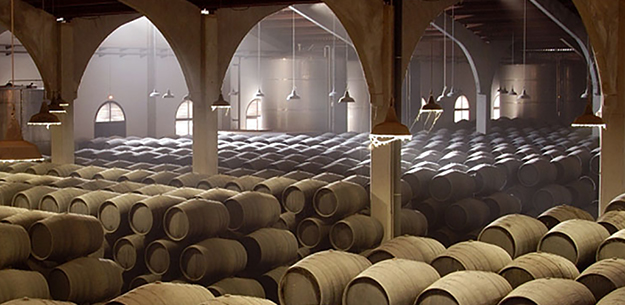
This dynamic system of stacked barrels involves mixing wines that are in different stages of the aging process. It results in the preservation of the characteristics of the wine, while yielding typical "vintage-less" fortified wines. In addition to DO Jerez-Xérès-Sherry and Manzanilla de Sanlúcar, the system is also used in other Spanish wine regions, including (and especially) DOP Montilla-Moriles, DOP Condado de Huelva, DOP Málaga and Sierras de Málaga and DOP Alicante, as well as for making Sherry vinegars. For the purposes of this article, we will talk about its use in DO Sherry.
This process, with origins that likely date back to around three-hundred years ago in Sanlúcar de Barrameda, involves aging the wines in rows or blocks of barrels that are stacked on top of each other in pyramid fashion. The bottom row, or solera (from the Spanish word for floor, suelo), contains the oldest wine. The barrels or butts – as they’re often called – placed in subsequently higher tiers on top of the solera are called criaderas, meaning “nurseries.” The highest row contains the youngest wine, and the rows are numbered in order of proximity to the bottommost tier: 1st criadera, being the closest, followed by 2nd criadera, etc.
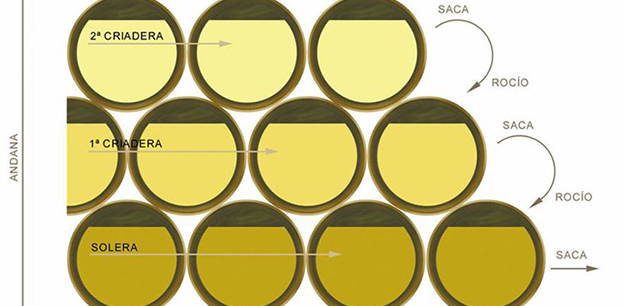
The wine barrels thus arranged, the aging process is as follows: At specific intervals, an amount of wine from the oldest, floor-level cask is removed (in a process called saca) for bottling. This barrel is then topped off with wine from the next tier up, and so on, until reaching the top row. The top-tier of casks then has “base wine” from the añada system (wine from a particular vintage) added to it, although none of the 500-liter casks are filled completely.
This act of topping off the barrels is called the rocío (sprinkling), and the whole saca and rocío process is called correr escalas (running the scales). The wine that is taken out to be bottled is therefore a mixture of all the wines above it – hence its lack of vintage – created in an endless process of mixing and aging that produces some of the world’s most distinctive wines. Not only does this process serve to preserve the characteristics of the wine in the solera, it also minimizes any variations that might occur from one year to the next.
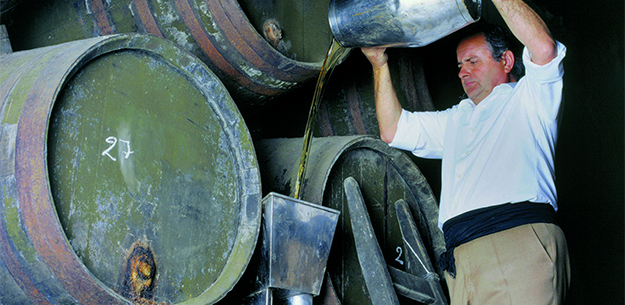
Although this description explains the basic functioning of the solera-criadera aging system, the product can be affected by myriad factors. One is the type of wood used for the casks, though American oak is now the most common. Another is the frequency with which the wines are moved through the system – operations called trasiegos – and the quantity and frequency of the sacas depends on the characteristics sought after by the winemaker. Different types of sherry wines are also subject to different treatment.
Let’s consider three types of dry sherry to see how the solera-criadera system varies among them, and see how these factors are essential to the wines’ characteristics.
Manzanilla - Fino fortified wines
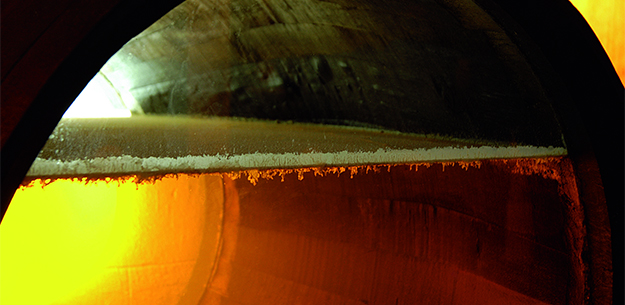
Manzanilla and Fino are made using similar biological aging processes that take place within the solera-criadera system – although Manzanilla can only be made in the town of Sanlúcar de Barrameda due to its specific climatic and geographical conditions. These, the lightest hued of the dry sherry wines, are the result of aging under a layer of living yeast called the veil de flor. This special film of yeast forms over the base wines placed in the top group of casks, creating a seal over the wine that prevents it from oxidizing, thereby preserving its brightly straw-colored hue, among other things.
When the time comes for the saca, the trasegadores (people responsible for the trasiego) move the wine down the tiers with extreme care – adding the new wine below the layer of flor – so as not to disturb it, while still seeking a homogenous mixture in each of the butts. Moving the wine this way also serves to dissolve a certain amount of its oxygen content, which helps with the regeneration of the flor. In this sense, the solera-criadera system is an absolutely essential part of this biological aging process, as it relies on the addition of young wine containing the micronutrients that the yeast needs. Fino wine typically passes through three to seven criaderas, while Manzanilla wines will involve nine, if not more.
Amontillado fortified wines
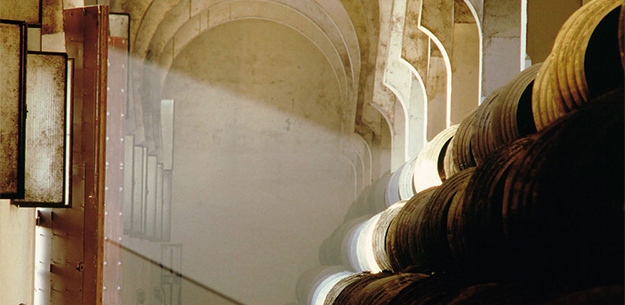
Amontillado wines exemplify how the solera-criadera system can bring together both biological and oxidative aging processes. The wine is initially aged under flor for a period of around three to eight years. Typically, the winemaker chooses when to end this biological aging process by fortifying the wine, bringing the alcohol level to around 17% and thereby killing off the yeast. The wine continues to age in the blocks of casks, but this time through oxidation, which allows it to develop warm amber tones and spiced, nutty notes – although the way that the color, flavors and aromas of an Amontillado develop can vary greatly from winery to winery.
Oloroso fortified wines
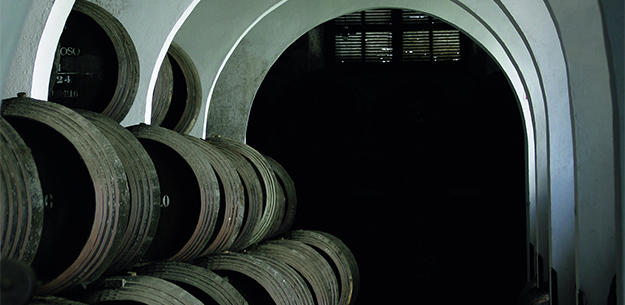
In the case of these mahogany-hued, wonderfully nutty and complex sherries, the solera-criadera system is used entirely for oxidative aging. The base wine is fortified to 17% in order to prevent the flor from forming, and the wine’s oxidation is aided by moving the wines from one cask to the next. Long periods of aging can also result in the evaporation of some of the wine’s water content through the porous wood casks, leading to more intense flavors and aromas that can range from deeply toasted, to spiced and/or balsamic.
For more information about Sherry wines, please visit www.sherry.org


